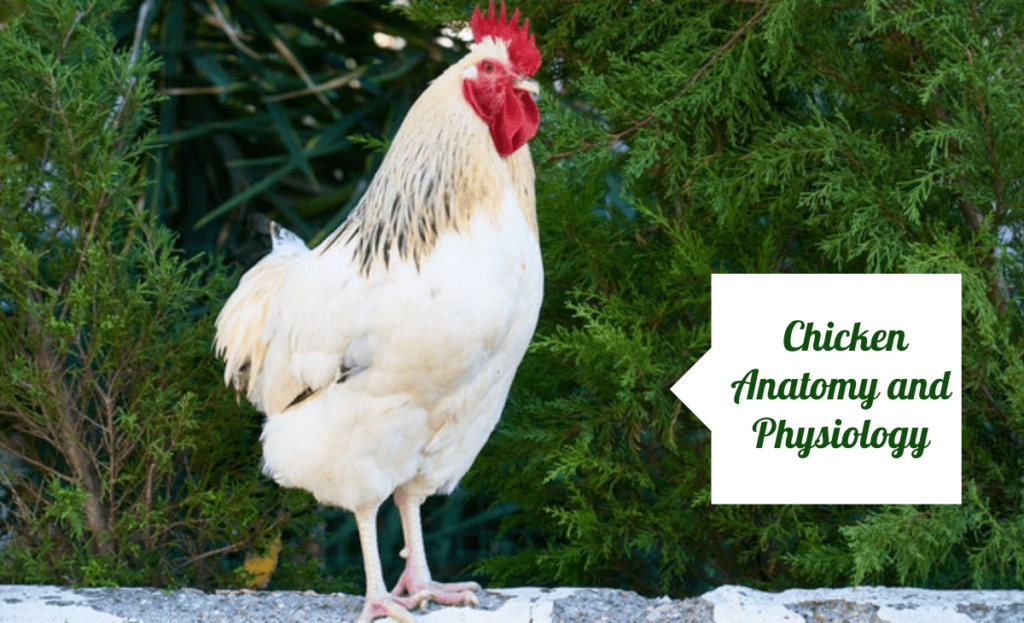
This article will address some of the most frequently asked questions about the anatomy and physiology of chicken breeds. We will discuss how much chickens weigh, their internal organs, cold tolerance, and how they make sounds. After reading, you should better understand how chickens work physiologically.
What is the average weight of a chicken?
The average weight can vary greatly depending on the breed. Some of the smallest chicken breeds can weigh as little as two pounds/1 kg, while the largest chicken breeds may weigh 12 pounds/5.5 kg or more. The chicken’s weight is typically between 4 and 10 pounds.
Some popular chicken breeds, like a Rhode Island Red rooster chicken, weighs 8.5 lbs/3.9 kgs. For comparison, a Rhode Island Red hen chicken weighs 6.5 lbs/2.9 kgs.
One of the largest chicken breeds is the Jersey Giant which weighs in at 14 lbs (6.4 kg). While one of the world’s smallest chicken breeds is the Serama Chicken weighing in at a minuscule 6oz.

How much do chickens weigh (Newborn chicken)
Chicks typically weigh between 2 and 4 ounces. By six weeks of age, most chicks will be close to their mature weight ranging between 1.1 pounds to 10 pounds sometimes.
As hens are small, they need extra protection from predators like foxes or bears. For this reason, the best way to keep them safe is by using chicken coop cameras to watch over them.
Do chickens have ears?
Yes, chickens have ears! Their ears can be seen on their head, covered in feathers. Chickens can hear very well and use their hearing to communicate with other chickens, find food, and avoid predators.

What is the cold tolerance of chicken?
Chicks can tolerate temperatures of about 20 degrees Fahrenheit (or –6 degrees Celsius). Below this temperature, roosters, and hens will start to experience hypothermia and may not be able to survive.
To keep your flock warm and safe during winter months or colder climates, it is essential to make sure your chicken coop is well-insulated and has a heated water bowl to keep chickens warm. This way, they stay comfortable even when the temperature drops below freezing.
When is it too cold for chickens in winter?
As mentioned, hens can tolerate temperatures about 20 degrees Fahrenheit (or -7 degrees Celsius) without too much trouble. However, if the temperature dips below this point for an extended period, the chicken may start to experience problems. In extreme cases, the cold weather could kill your chicken.
The best temperatures for adult hens in winter
In winter, the best temperature for hens is between 45 and 50 degrees Fahrenheit (or 7 to 10 degrees Celsius). Hens will start to lay eggs less frequently below these temperatures. They may stop laying eggs altogether at temperatures below 40 degrees Fahrenheit (or 4 degrees Celsius).

The best temperatures for chicken breeds in winter What is the difference
In winter, the best temperature for chicken breeds is between 30 and 35 degrees Fahrenheit (or -1 to 2 degrees Celsius). If the temperature falls below this, chicks may not be able to survive.
What sound does an adult chicken make?
They make a variety of different sounds depending on the situation. They may cluck, cackle, or squawk to communicate with each other, scare away predators, or call for help. A chicken can also make a soft purring sound when happy or content.
How can you tell if a chicken is sneezing?
Sneezing is a common symptom of respiratory illness in bird flocks. If your chicken is sneezing, you may also notice other symptoms such as runny eyes, lethargy, and decreased appetite. If your chicken is sneezing, it is essential to take them to the vet for a check-up.
Do chickens have teeth?
No, they do not have teeth. Instead, they have a hard beak that they use to peck at food, break open eggs, and groom themselves. There are two parts of the beak- the upper and lower beaks. The upper beak is curved, and the lower beak is straight.
Does a chicken have a vagina?
Yes, hens have vaginas. The hen’s vagina is located on the underside of their body and is where they lay eggs. Chicks also have a cloaca, an opening that serves as both the vagina and the anus.
Does a chicken have nipples?
No, chickens do not have nipples. Instead, they have a brood patch, a patch of feathers on the underside of their body that helps keep eggs warm.
Can chickens see in the dark?
Yes, the entire flock can see in the dark. They have excellent vision and can see well in light and dark environments.
Can chickens swim?
Yes, they can swim. However, they are not very good at it and quickly sink. Chicks usually only swim if they have to, such as trying to escape a predator or get to shore during a flood.
How many toes do chickens have?

A chicken has four toes on each foot. Three of the toes point forward and one backward. The backward-pointing toe helps the chicken grip the ground when walking or running.
Do bantam chickens have taste buds?
Yes, bantam chicken has taste buds. They use their taste buds to determine whether food is safe to eat and how sweet, salty, or bitter the food is.

How long can chickens go without food?
They can survive without food for up to two weeks. However, they will become weak and may eventually die if they do not eat for this long.
How long can chicken go without water?
Bantam chickens can survive without water for up to three days. However, they will become dehydrated and may eventually die, so it’s vital to ensure they have easy access to water.
How much feed is required to raise a meat chicken?
You need 5.5 pounds of feed to raise a meat chicken of age 6 weeks and 8 to 10 pounds to age 8 weeks for commercial breeds. Roosters need more feed per pound of meat produced than bantam chickens. Don’t plan to keep birds any longer than the time it takes to reach the desired weight.
How tall is a chicken?
The average chicken often stands at most just over 70 cm (27 inches) tall, making them perfect for living in smaller spaces or running around outside. However, some chicken breeds can be taller or shorter, depending on their size. It will help if you put chicken troughs at heights that accommodate different sizes of chicks to ensure that they can eat.
Water sources such as feeders or waterers should also have significant space for the little ones who aren’t quite able to jump yet to drink still.

How high can chickens jump or fly?
Roosters can fly up to 10 feet in the air and jump up to 3 feet high. However, they usually only fly or jump when startled or trying to escape a predator.
What is the longest flight record for chicken?
The chicken’s record for the longest flight is 13 seconds, whereas its farthest recorded distance covered 301.5 feet. However, this is a sporadic occurrence.
Most flock birds only fly a few feet in the air, barely enough to disturb your neighbors or upset your dog.
Do chickens pee?
The answer is yes, they pee. They use their cloaca to release both urine and feces from their body. Chicks usually urinate about once every hour.
How do chickens pee?
Chickens pee through their cloaca, which is an opening located on the underside of their body. For hens, the cloaca serves as both the vagina and the anus.
Do chickens sleep for a long time?
Chicken’s sleeping patterns vary depending on the time of year and their environment. In summer, chickens typically get 8 hours of sleep per night.
In winter, they require 10-11hrs to recharge themselves after being awake all day long. Chicks will often take short naps throughout the day as well.
Average Egg Production in Hens
Difference breeds of hens have different egg production behavior. The average egg production in well-fed hens is 250 eggs per year. Hens that are raised to produce eggs provide good quality eggs.
Average Meat Production in Hens and Roosters
Several meat-producing chicken breeds provide 2.5 to 3 pounds of meat at age of 7 to 9 weeks. Commercial broiler chicken breeds tend to grow to an average chicken weight of 2.2 pounds in 56 days. Bantam Hens and roosters both provide good quality meat and eggs.
What is the difference between bantam birds and large chicken fowl?
Flock birds vary in size. Bantam breeds are small birds. The average size of bantam breeds is small compared to fully grown chicken fowl. Male and female birds, roosters, bantam chicks, or hens that are raised for meat tend to weigh different.
Final Words
We hope that this article has answered some of your chicken anatomy and physiology questions. Chickens are fascinating creatures with a variety of unique features. Please feel free to ask in the comments section below if you have any further questions about chicken breeds.
